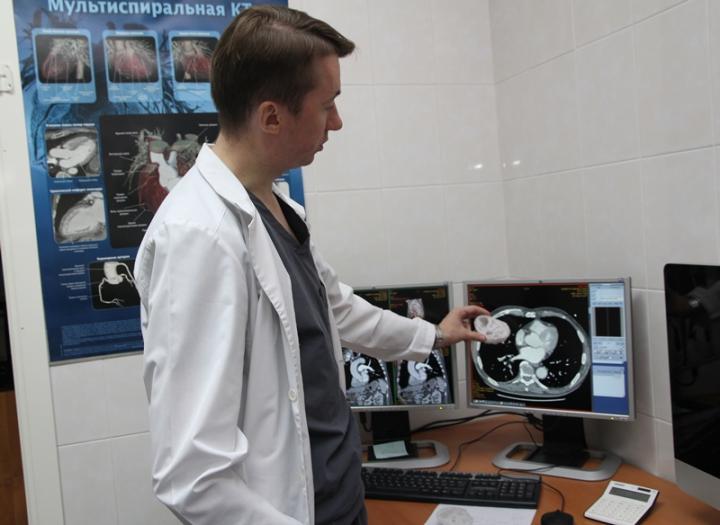Tomsk Polytechnic University, one of Russia’s leading academic institutions, recently announced they are creating 3D printed models of children’s hearts to aid surgical planning in urgent cases.
Using MRI data the university is 3D printing medical models for Tomsk Research Institute of Cardiology (RIC). The Director of the Modern Manufacturing Technology Scientific and Educational Center Vasily Fyodorov explained, “We need two weeks to create a heart 3D-model. Meanwhile, patients often need urgent help. We should reduce printing time to 1-2 days. For this purpose, it is required to select an appropriate equipment and to develop proper software that will directly convert MRI data into the stl files for 3D printing. Now we are looking for funding to develop software. Ideally, we would like the 3D printer to be in the hospital.”

3D Printing Industry asked Dr. Vyacheslav V. Ryabov, Research Institute for Cardiology, Tomsk, Russia and Yuri Dontsov, an engineer at the Thermal Active Polymers International Scientific and Educational Laboratory a few questions about how 3D printing is transforming healthcare.
3D Printing Industry: Can you say more about the materials and the 3D printers used to make the models?
Yuri Dontsov: To date, 3D models of hearts are printed out of ABS, polylactide [PLA] and PET. We have already 3D printed part of a child’s heart out of rubber, in the short-term we plan to print it completely out of rubber.
3DPI: Is 3D printing the heart models likely to become a widespread practice, or remain only for special cases?
Yuri Dontsov: In my opinion, cardiac surgeons will define in each case whether they need a 3D printed heart model. In non-standard situations, it will be obligatory.
3DPI: Can you say anything about the challenges the research has faced, and how these have been overcome?
Yuri Dontsov: The most difficult is to convert MRI data into an stl. There is a series of stages: a) selection of necessary area; b) separation of muscles and everything that surrounds the heart from the muscles of the heart; c) removal of MRI defects; d) conversion into stl format; e) correction in MeshLab, improving, processing, and preparation for printing.
3DPI: Have the 3D printed children’s heart models been used to plan surgery yet?
Dr. Vyacheslav V. Ryabov: In the Research Institute for Cardiology, 3D modeling is used in planning the operation in cases where it is necessary. Today this can already be called a regular application. In 2017, the RIC specialists conducted 3D modeling of the hearts 6 times and each time received the necessary information that was used in making clinical decisions.
3DPI: How do you convert the MRI data to an STL?
Dr. Vyacheslav V. Ryabov: There is the special software called 3DSlicer.
3DPI: Can you say anything about the challenges the research has faced, and how these have been overcome?
Dr. Vyacheslav V. Ryabov: Preparing a file that meets the requirements of 3D printing needs significant time and software solutions that are not always available.
3DPI: Can you say anymore about how having a 3D printed model has led to an adjusted surgical plan?
Dr. Vyacheslav V. Ryabov: Using 3D modeling allows you to choose the optimal treatment tactics by the time of surgery, to reduce risks, and to reduce the number of further surgical interventions. All this contributes to improving the quality of life of patients and the duration of their lives.
We want to know about the academic research driving 3D printing forward. Nominations for the second annual 3D Printing Industry Awards are now open. Make your selections now.
For all the latest 3D printing news, make sure you subscribe to the 3D Printing Industry newsletter, like us on Facebook and follow us on Twitter.


